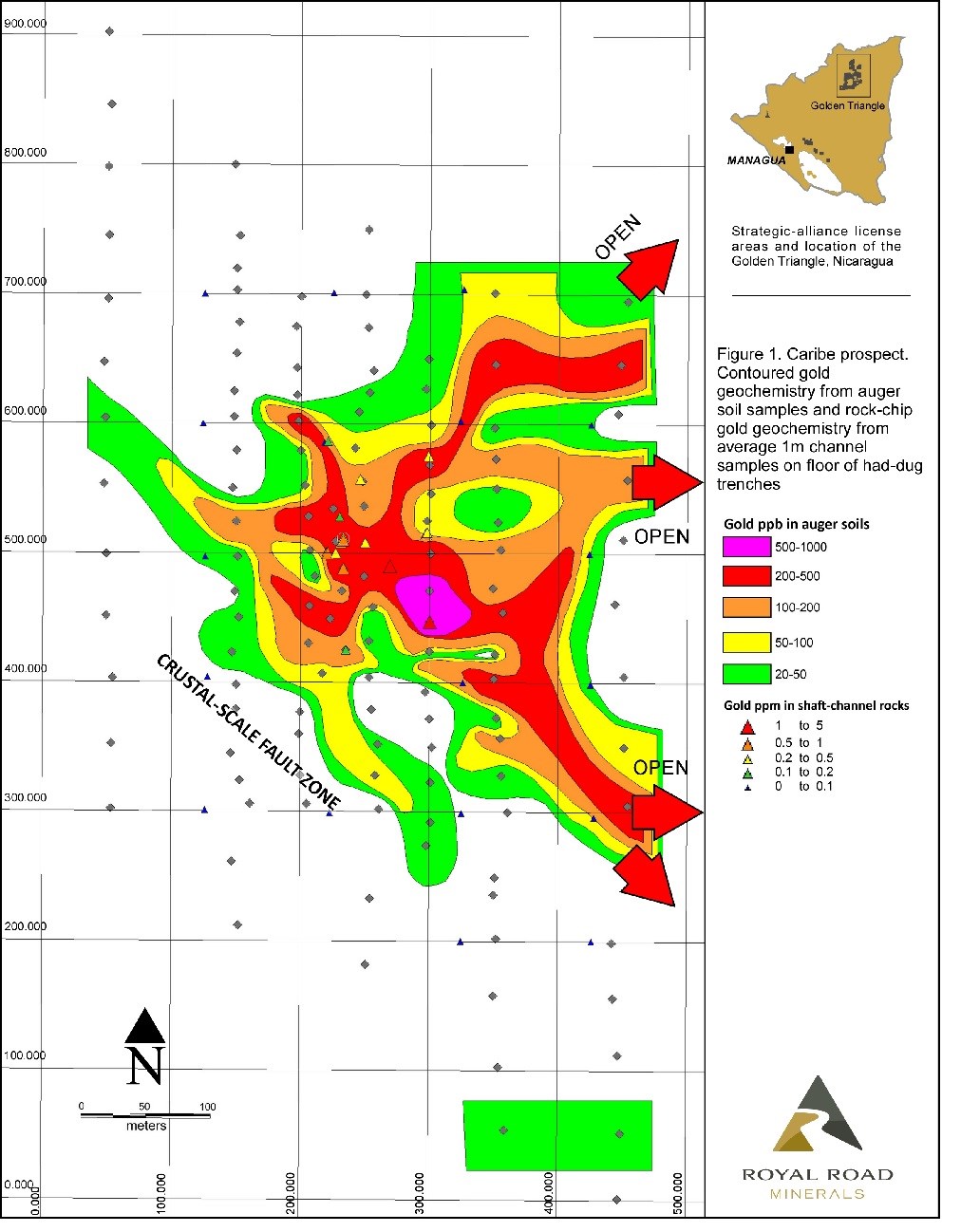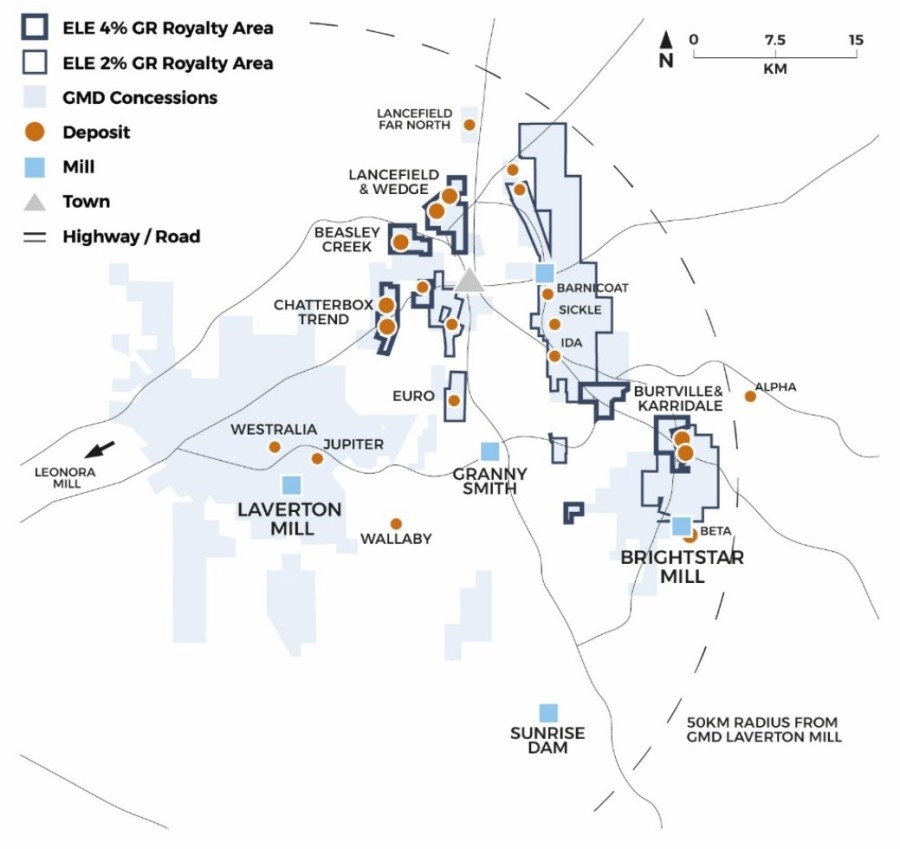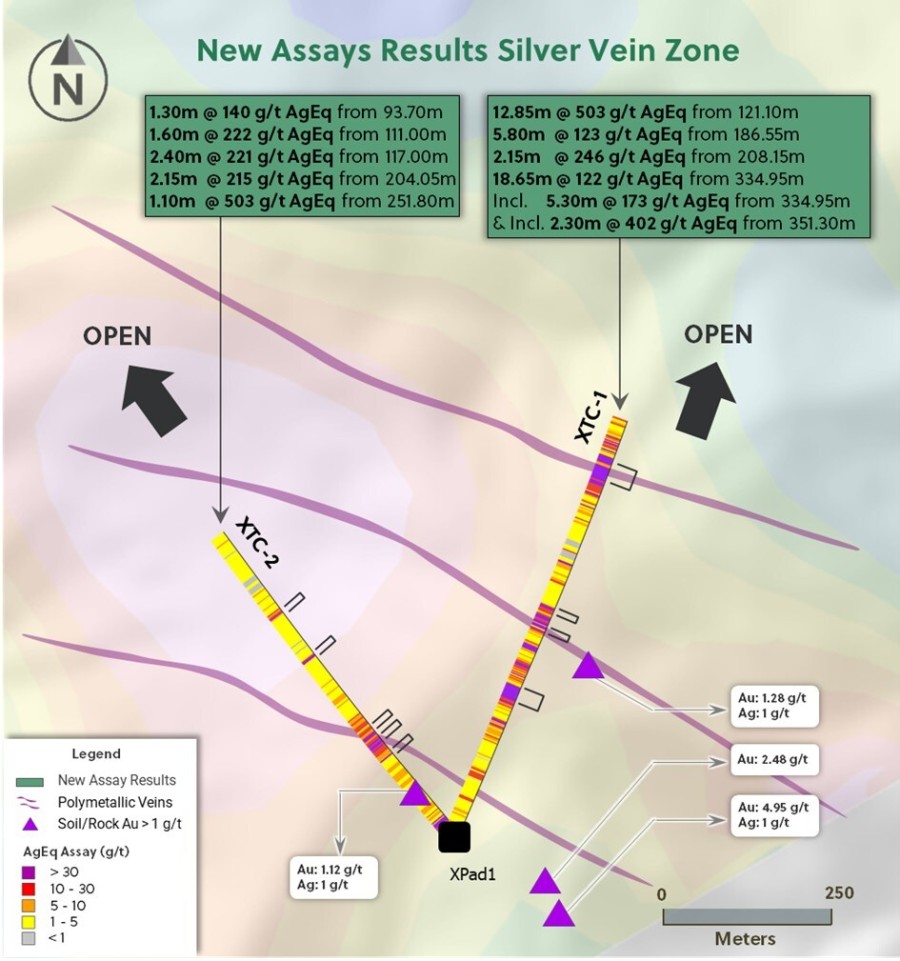Toronto, Ontario--(Newsfile Corp. - May 15, 2018) - Royal Road Minerals Limited (TSXV: RYR) ("Royal Road" or the "Company") is pleased to announce initial deep auger soil sample results from its newly identified Caribe prospect in the Golden Triangle region of northeastern Nicaragua.
The Caribe prospect forms a part of the Company's 50-50 Strategic-Alliance agreement (see press release; September 6, 2017) with Hemco (a subsidiary of Colombia's Grupo Mineros S.A. MINEROS:CB) and is located in the highly prospective Golden Triangle of northeastern Nicaragua (Figure 1), a region characterized by epithermal style gold veins, skarn and porphyry-style mines that have combined to produce in excess of an estimated 8 million ounces of gold since the early 1900's. Hemco own and operate the Bonanza gold mine in the Golden Triangle and manage an innovative toll-treatment program which processes mineralized material from artisanal operations throughout the region. Royal Road Minerals is operator of the Strategic Alliance.
Royal Road's exploration team discovered the Caribe prospect during reconnaissance follow-up of airborne geophysical anomalies in February of 2018. Topographically the prospect area is relatively planar, outcrop is limited to creek exposures and there is no previous record of mineralization in the area. Initial grab sampling of strongly weathered, argillic-altered and variably-brecciated felsic volcanic float material returned anomalous gold with associated anomalous values in molybdenum and arsenic. Follow-up deep auger soil sampling was then conducted using a 3-meter long hand-auger to access the residual soil horizon located below the organic and saprolitic layers. Soil-sampling to-date has identified a strongly anomalous area of gold geochemistry (range 20 to 983ppb, mean 149ppb gold) of 600 by 400 meters in area which remains open to the north and east (see Figure 1). Additionally, 18 small 1 meter square and 2 to 3 meter deep shafts were dug in order to expose bed-rock, assist mapping and collect channel and grab rock-chip samples. The highest grab rock-chip sample collected from these shafts to-date returned 3.5 grams per tonne gold (range 0.01 to 3.536 grams per tonne gold; note grab samples are selective samples and are not necessarily representative of the mineralization hosted on the property) from quartz-veinlet stockwork hosted in strongly oxidized rhyodacite with potassium feldspar alteration.






